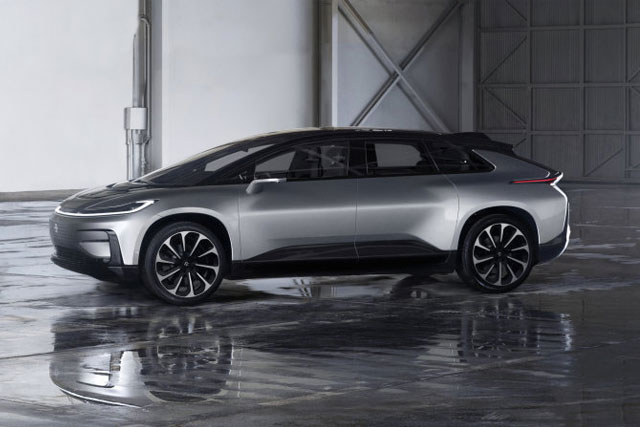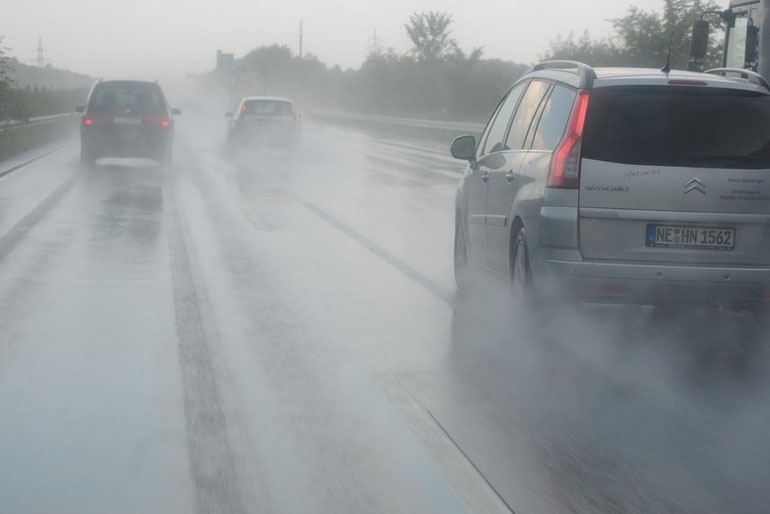Hydroplaning can cause you to quickly lose control of your vehicle and likely wind up in an accident. Because of how dangerous hydroplaning is and how easily it can happen, we thought it is best to explain why hydroplaning happens and provide some tips for when you’re stuck driving in the rain.
You should always drive cautiously and never over the speed limit, but these tips will hopefully help make you more aware of the conditions for hydroplaning and help keep you safe on the roadway.
What is Hydroplaning?
Hydroplaning occurs when a vehicle enters a depth of water and the tires are unable to move the water away fast enough for them to maintain contact with the road. The tires wind up essentially floating on a layer of water.
Without the tires making contact with the road it is difficult or even impossible to control your vehicle, and thus, increases the chances of being involved in motor vehicle accidents.
There are two primary reasons why your tires will not be able to remove enough water to prevent hydroplaning. First, you are traveling through water at a high rate of speed which does not allow enough time for the tires to move water before more water is present. This causes hydroplaning and a high rate of speed makes keeping control of your vehicle that much more difficult.
The second reason why your tires would be unable to move enough water to prevent you from hydroplaning is if the tread on your tires has worn down significantly. The channels and grooves in your tires are specifically made to offset water while driving (besides helping to grip the road)
Over time and with mileage, this tread diminishes and grows smaller. Without the grooves and channels being deep enough, the tires cannot move enough water away and hydroplaning happens. Which leads to motor vehicle accidents that were avoidable.
Tips to Avoid Hydroplaning
Here are some great tips to keep in mind to avoid hydroplaning:
Try to Wait it Out
It’s not always possible, but if you’re not in a hurry to reach your destination and you want to avoid the risk, try waiting for the storm to pass or at least for it to let up enough for the roads to be a little less wet. This can save you from a scary situation and a lot of headaches.
Drive Slow, Use Your Headlights
It can be difficult to break habits, especially if you’re on a highway, but it’s often better when driving in the rain to drive a good bit slower. Add to that, you should always have your headlights on in the rain to improve visibility.
Slowing down just a little can help you avoid hydroplaning and having your lights on can help you avoid obstacles in the road.
Never Pass Through Plowing Water
One rule that you’ve probably heard often is to never pass through flowing water if you don’t know its depth. This is so true.
Moving water can easily cause you to lose control of your vehicle and if it is deeper than you think, you’ll have more to worry about than just hydroplaning as you could submerge your vehicle.
Avoid Using Cruise Control
Cruise control is convenient when you’re traveling long distances, but if you have to travel in any kind of bad weather, it is best avoided. When it rains and you put on cruise control, you lose time to react, which may be necessary if you start to hydroplane.
Switching back to regular control of your vehicle while hydroplaning can be too much and cause you to lose control and get into an accident.
Check Your Tires
One of the best ways to prevent yourself from hydroplaning is to make sure your tires are in good shape. Bald tires are a disaster waiting to happen even during normal weather, but when you add water to the mix it is even more dangerous.
Change your tires out regularly and avoid wet roads if the tread is starting to thin.
To Sum Up
There you have it, a few of our best tips to prevent hydroplaning. We hope the next time you’re out driving and the streets are wet, these tips will help save you from potential danger.







